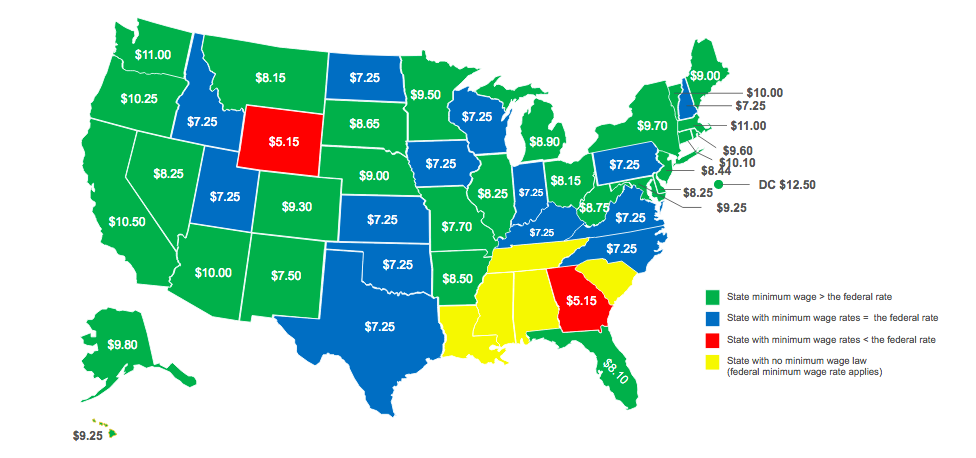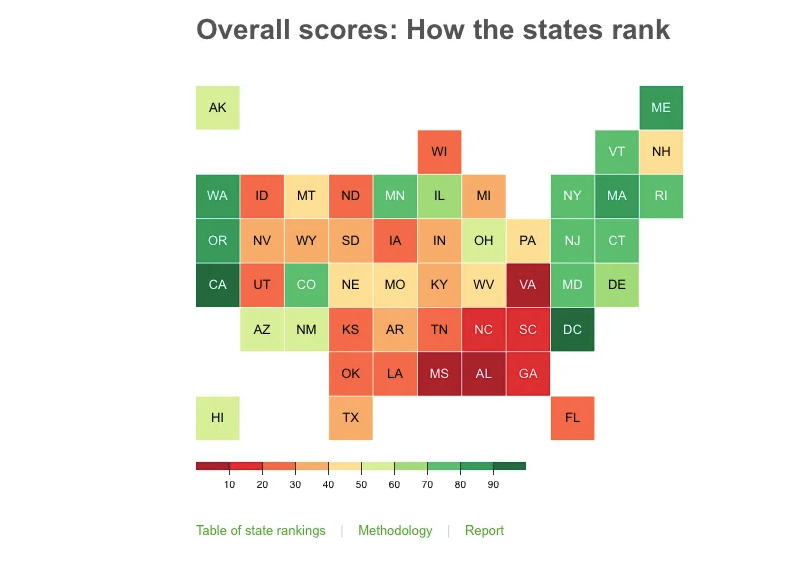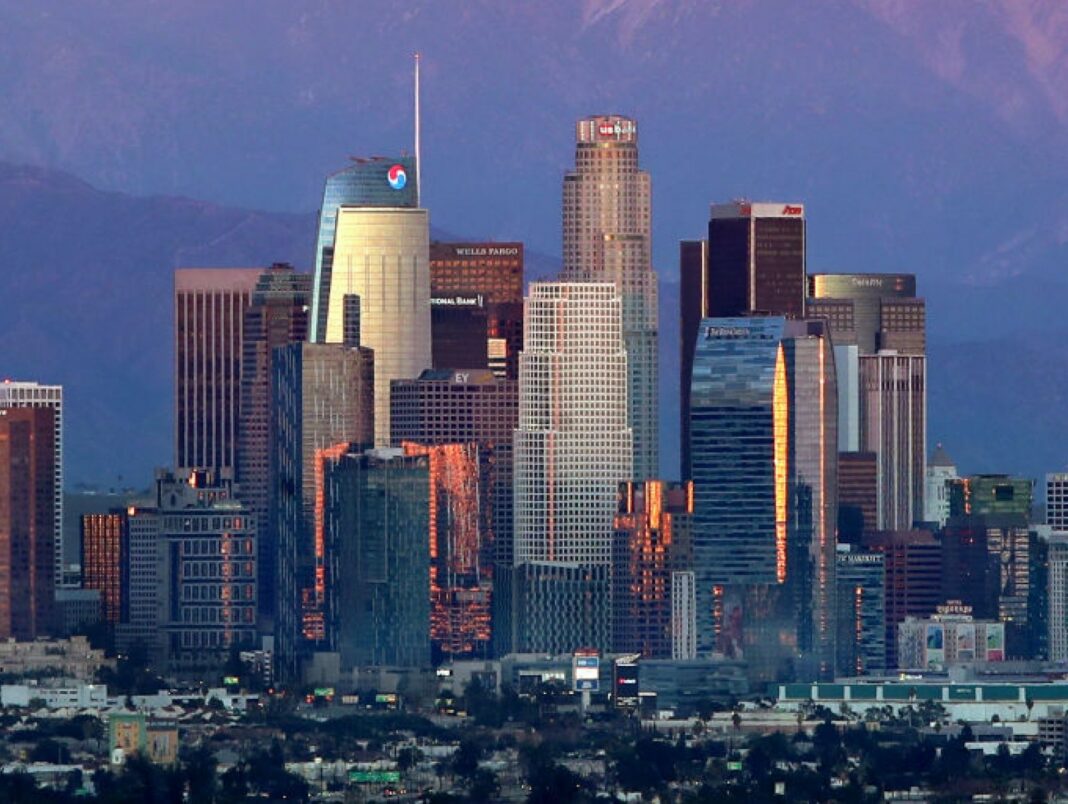While it takes an average worker in Virginia 4 minimum wage jobs to survive, workers in Arizona have the right to paid sick leave. Breastfeeding mothers in Oregon get time to pump milk at work. In New York, employers must give workers two weeks’ notice of their schedule.
“Investing in your employees is good business. Protecting your workers is good business,” wrote attorney Jeffrey Campolongo in a recent op-ed. ”The two concepts are not mutually exclusive.” However, as a new study reveals, those sentiments are not necessarily reflected in worker policies across the nation.

Oxfam, a global nonprofit devoted to fighting poverty, has released its annual Best States to Work in America report. The study, which covers all 50 states as well as the District of Columbia and Puerto Rico, examines three dimensions of state policies: wages, worker protections, and rights to organize. Wage policies include minimum wage laws and the ratio of unemployment payments to the cost of living. Worker protections include paid sick/family leave and considerations for pregnant/breastfeeding women, while rights to organize encompass the existence of “right to work” laws (which suppress union activity) as well as collective bargaining and wage negotiation.
States in the Northeast and on the West Coast have some of the strongest labor laws in the country, while those in the South lag behind, according to a state-by-state analysis of workers’ rights published by anti-poverty group Oxfam America. The latest iteration of Oxfam’s Best States to Work Index technically ranks the District of Columbia as the top locale for strong labor laws.
While Congress may not be accomplishing much these days in regards to labor laws, dozens of state legislatures have been super-busy in the past few years giving workers more rights than ever before. A new Oxfam report from Oxfam America, an anti-poverty group, analyzed labor policies in all 50 states and the District of Columbia, ranking the best to worst places to work in 2019. Surprisingly, not all the best places to work are liberal states (though a lot of them are there). The states with the worst labor practices, however, are mostly in the South.
Among states, California, Washington, Massachusetts, Maine and Oregon claimed the top spots, with Rhode Island, Vermont, and Connecticut following close behind. The index ranks states on 11 policy areas comprising three main categories: wage policies, such as state minimum wages; worker protection policies, such as accessibility to paid time off; and right-to-organize policies, including union protections. The 30 states that have raised their minimum wages above the federally mandated $7.25, for example, scored higher in the wage category than those that have not.
Oxfam researchers ranked states by evaluating policies on wages, worker protections, and union rights. For example, the report compares a state’s minimum wage to what it would cost to support a family of four. (In Virginia, it would take four minimum wage jobs.)
It also notes whether or not state law allows cities and counties to pass their own minimum wage increases; takes into account policies that protect workers from abuse and exploitation, especially women and working parents; and looks at how easy it is for workers in a certain state to form labor unions. Unsurprisingly, Republican-controlled states that have passed right-to-work laws to weaken labor unions fell toward the bottom of the list.
Better work conditions are more than a labor issue, too. Oxfam researchers found a link between states with strong labor laws and states with higher life expectancy, median income, and labor force participation as well as lower poverty and infant mortality rates.
The infographic below shows all USA states with the best and worst workers’ laws.
The infographic is courtesy of the Oxfam USA minimum wage report.

1) District of Columbia
I know DC isn’t technically a state, but if it were, the District of Columbia would rank at the very top. The nation’s capital has a huge workforce, and it’s easy to join a labor union there. The minimum wage ($14 an hour) is pretty high compared to other states. But it would still take a least two minimum-wage jobs to support a family of four.
The District has also passed a slew of labor laws that guarantee certain benefits to workers. For example, it’s illegal to pay women and people of color less than someone else doing the same job. DC requires businesses to accommodate pregnant workers and provide space for breastfeeding mothers to pump milk. Workers get paid family leave and paid sick days. Employers must provide advance notice of scheduling changes. DC also provides workers with sexual harassment protections.
There are only two worker protections included in the report that the District doesn’t offer. First, it doesn’t require companies to restrict access to an employee’s salary history, which would help reduce the gender and racial pay gap. Second, it doesn’t guarantee flexible scheduling options for low-wage workers. But DC seems to be doing more for workers than states. So it’s not all that surprising that DC has the highest median household income and GDP per capita than every state in the nation.
2) California
California moved from the third best state to work in 2018 to the second-best this year. That’s mostly because of a dollar bump in the minimum wage (now $12), which shrank the gap between the minimum wage and the cost of supporting a family of four ($30.68 an hour). It now takes about 2.5 minimum wage jobs. The state also makes it easy for most workers to join labor unions and provides all of the worker protections that DC does, though it also doesn’t guarantee flexible scheduling for low-wage workers. California has one of the highest life expectancies in the country (80.9 years) and a high median household income.
3) Washington
Washington dropped from second place to third place this year because the minimum wage increased by only 50 cents. Washington doesn’t require employers to accommodate breastfeeding mothers like California or DC, and it doesn’t make employers give workers flexible scheduling and advance notice of scheduling changes. Washington also ranks at the top when it comes to GDP per capita ($56,831).
Other States with great worker’s rights and good minimum wages include:
4) Maine
5) Oregon
6) Rhode Island
7) Vermont
8) Connecticut
9) Minnesota
10) New York

